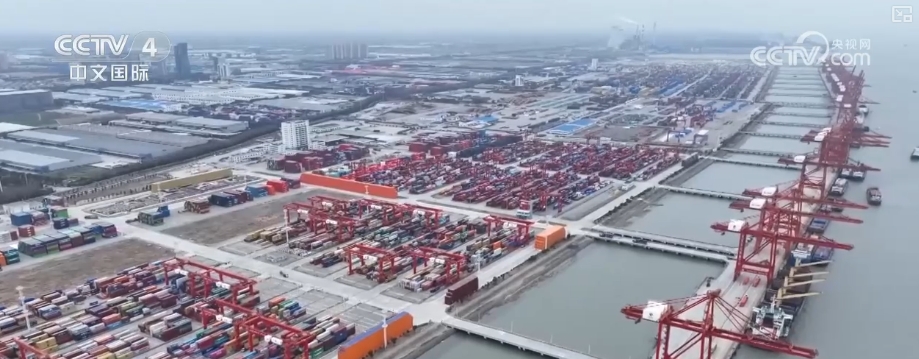Russian Experts Once Analyzed China: It Took 10 Years For Its Nuclear Power To Catch Up With Russia, And It Took More Than 20 Years For Its Navy To Catch Up With The United States.
Russian Experts Once Analyzed China: It Took 10 Years For Its Nuclear Power To Catch Up With Russia, And It Took More Than 20 Years For Its Navy To Catch Up With The United States.
In January 2025, a group of Russian international experts came together to publish the report "China-2049: Future Analysis". Looking back at this report, it is easy to find that
In January 2025, a group of Russian international experts came together to publish the report "China-2049: Future Analysis".
Looking back at this report, it is not difficult to find that they comprehensively judged China's future development from China's economic, military and internal reforms, and made suggestions on how Russia should deal with China's diplomacy in the future.

The development of China’s military power
In this report, one area that has attracted more attention from the Chinese people is China's military development.
The report pointed out that China is currently investing a lot of resources in the development of nuclear power and naval power, but Russia and the United States still have certain advantages over China in these two aspects.

In recent years, China’s naval equipment has developed rapidly
For example, in terms of nuclear power, they believe that Russia is still about 10 years ahead of China. In terms of ocean combat capabilities, China will catch up with the United States in about 2049.
Generally speaking, this Russian report is quite professional. Although China's military power is developing rapidly, it does still lag behind the United States and Russia in some fields.
In terms of nuclear power, China has about 400 to 600 nuclear warheads in service, but Russia has about 1,600 active nuclear warheads (2023 data).
If you include those nuclear warheads that have not entered combat readiness, Russia's total number of nuclear warheads exceeds 5,000.

The total number of Russian nuclear warheads reaches more than 5,000
From this, we can see that there is still a relatively large gap in nuclear power between China and Russia. It will take time for China's nuclear power to catch up with Russia.
However, this time will not last long, because China is also rapidly increasing the number of its nuclear warheads.
The U.S. Pentagon estimates that China's nuclear warhead production capacity has reached an annual output of about 100, and it is expected that China's number of nuclear warheads will reach 1,000 by 2030.
In another 10 years, that is, around 2035, China's number of nuclear warheads will reach about 1,500, which is almost the same number as Russia's active nuclear warheads.

In terms of navy, there is still some gap between China and the United States in terms of large warships.
The United States has 11 aircraft carriers in active service, and China has 3. Among large shield ships, China has about 50 shield ships and the United States has more than 70.
China is developing its destroyer force at an extremely fast pace. According to China's current destroyer construction speed, China's number of shield ships will exceed that of the United States by 2035.

China will soon catch up with the United States in the number of shield ships
As for aircraft carriers, China will not be able to catch up with the United States in a short period of time.
Our country's aircraft carrier construction cycle is about five years. At this construction rate, it will take China 35 years to build another seven aircraft carriers to reach 10 aircraft carriers.
Based on the launch of the Fujian ship in 2022, the time will have reached 2057.

It will take more than 20 years for China's ocean power to catch up with the United States, and the possibility is still very high.
The decline of U.S. military power
However, all the above speculations are based on one premise, that is, the military strength of the United States and Russia has not retreated.
But judging from the current situation, in the next 10 to 20 years, the United States is very likely to experience a significant regression in military strength.

The United States may see a military decline in the future
Because a country's military strength and industrial capabilities are highly correlated, strong military strength must be behind a strong industrial system.
But now the United States has entered a high degree of deindustrialization, and this state cannot be reversed. This has led to the decline of the U.S. military-industrial system, which is increasingly unable to maintain strong military power.
Weapons produced in the past will age and be damaged. If a country wants to maintain a strong military force, it needs to produce new weapons to fill the number of old weapons after they are damaged and aged.

Weapons age and become damaged
However, due to the regression of the military industry in the United States, its weapons production speed can no longer keep up with the aging speed of weapons.
This is particularly evident in the U.S. Navy. Ten of the 11 aircraft carriers currently in service in the United States are Nimitz-class aircraft carriers. The launch interval of these 10 Nimitz-class aircraft carriers is 2 to 4 years.

Nimitz class aircraft carrier
In other words, when the U.S. Nimitz-class aircraft carriers begin to retire, their retirement interval will also be one every 2 to 4 years.
But now when the United States is producing Ford-class aircraft carriers, the interval between aircraft carrier launches has reached more than 6 years.
The first ship of the Ford class, the USS Ford, was launched in 2013, and the second ship, the USS Kennedy, was launched in 2019. The interval between the launches of the two aircraft carriers is 6 years.
The third ship, the USS Enterprise, was originally planned to be launched in 2025. The original plan was to launch it six years apart from the USS Kennedy. But now the construction progress of the Enterprise is far less than expected, and the launch of the Enterprise has been postponed to 2029. The launch of the Enterprise is 10 years apart from the Kennedy.

Ford-class aircraft carrier USS Kennedy
It can be seen from this that the speed at which the United States builds Ford-class aircraft carriers is far from that of the Nimitz-class aircraft carriers it built back then, and its speed at building aircraft carriers is getting slower and slower.
Therefore, the number of aircraft carriers in the United States will inevitably decrease in the future, and its aircraft carrier strength will naturally regress.
China is making rapid progress, but the United States is regressing. It may not take 20 years for the Chinese navy to catch up with the United States.

It may not take 20 years for the Chinese Navy to catch up with the United States
The problem of China’s overseas military bases
Regarding the naval strength of China and the United States, the "China-2049: Future Analysis" released by Russia also pointed out an area that ordinary people pay little attention to, and that is overseas military bases.
Everyone knows that the United States has a large number of overseas naval bases around the world. The role of these naval bases is to provide logistical support for the U.S. navy deployed overseas, thereby ensuring that the U.S. Navy can still maintain combat effectiveness far away from home.

U.S. overseas naval bases
It can be said that these overseas military bases support the global hegemony of the United States. China obviously does not have the same conditions as the United States. Currently, China has very few overseas military bases that can provide logistics and maintenance support for our military forces overseas.
With the resources China currently invests in overseas military bases, our country may not be able to catch up with the United States within this century.
However, the report "China-2049: Future Analysis" points out that China may not deploy military forces everywhere around the world like the United States.

A more likely scenario is for China to deploy strategic pivots along its own “One Belt, One Road” initiative.
In other words, even if China wants to build a large number of overseas naval bases in the future, it will probably only be built along the "Belt and Road" route, rather than deploying globally like the United States.
This construction direction of our country makes the navy inferior to that of the United States in terms of scope of activities, but it is enough to protect its interests along the "One Belt, One Road". At the same time, the cost of maintaining overseas military forces is also much lower.






